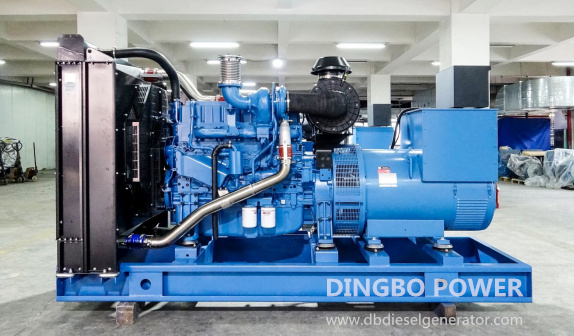Diesel generator emission standards refers to the emission limits of a generator’s pollutants such as exhaust gases, waste water and residue during operation. Generally, these standards are developed by environmental protection departments or relevant institutions of various countries, which are aimed at protecting the environment, human health, and ecological balance. Globally, multiple organizations and countries have published emission standards related to diesel generator sets, such as the European non-road mobile machinery (NRMM) emission regulations (EU Stage V) and the U.S. EPA Tier series standards.
Diesel generators run on diesel fuel and they produce particulate matter (PM) and releases gaseous pollutants, including carbon monoxide (CO), volatile organic compounds (VOCs) and nitric oxides (NOx) during operation. Additionally, diesel exhaust contains carbon dioxide (CO2). PM consists of black carbon, or soot, along with various organic compounds. It is often caused by incomplete burning of diesel fuel.
Read more about: Diesel Generator Set Emissions and Their Environmental Impact
Global emission standards for diesel generators mainly include the emission standards established by the European Commission and the U.S. Environmental Protection Agency (EPA) Tier levels. Typically, the diesel generator emission standards aim at reducing the amount of the following diesel engine emissions.

1. Nitrogen oxides (NOx): Nitrogen oxides are one of the main pollutants emitted by diesel generators, and they mainly result from the high temperature during the combustion process. They include both nitrogen oxide (NO) and nitrogen dioxide (NO2). NOx have serious impacts on human health and the ecological environment, such as causing photochemical smog, acid rain, etc. Therefore, the EPA includes regulations to cover NOx under its nitrogen oxides requirements.
2. Particulate matter (PM): PM is another major pollutant emitted by diesel generators, which is mainly composed of unburned carbon black, sulfate and ash content. PM pollution can cause agricultural problems, visibility issues and stains on building exteriors from soot. People exposed to PM have higher chances of diseases such as asthma and lung cancer. Therefore, the emission limits for PM are also important indicators in emission standards.
3. Carbon monoxide (CO): Carbon monoxide is a colorless and odorless product of incomplete combustion in diesel generators, which is toxic to the human body. CO can bind with hemoglobin in the blood, leading to hypoxia, and even death in severe cases. Therefore, there are clear regulations on the emission limit of CO in the emission standards.
4. Hydrocarbons (HC): Hydrocarbons are one of the products of incomplete combustion in diesel generators, which is composed of unburned fuel and engine oil. HC emissions result from unburned fuel when the temperature inside the combustion chamber is not high enough. The main impact of HC on the environment and human health include photochemical smog and global warming. Therefore, the emission limits for HC are also important indicators in the emissions standards.
Various countries and regions develop different emission standards and design corresponding implementation systems based on their own environmental protection needs and economic development situations. For example, the U.S. EPA Tier levels are phased in and Tier 4 is in effect today. All new prime power and portable diesel generators should be manufactured to meet this tier requirement.
European emission standards for engines used in new non-road mobile machinery (NRMM) have been structured as gradually more stringent tiers known as Stage I...V standards. EU Stage V legislation is the latest emissions standard for NRMM with spark/compression ignition engines.
Stage and Tier are the EU and US respective terms for standards that drive progressive reduction of combustion engine emissions. The implementation time of these standards often affects the production and sale of diesel generator sets, because manufacturers need to design and produce generator sets that meet the requirements in accordance with the new standards.
To meet the emission standards, diesel generator set manufacturers usually improve a series of technologies to reduce the emission of pollutants. These technologies and measures include: improving the combustion chamber design, optimizing the fuel injection system, using clean fuels, and installing aftertreatment devices, such as catalytic converters, diesel particulate filters (PDF), etc. In addition, the generator sets are subjected to rigorous testing and certification to ensure that they comply with relevant emission standards.
To sum up, the emission standards of diesel generator sets are an important issue involving environmental protection and human health. With the continuous progress of science and technology and the raising of environmental awareness, there may be more stringent emission standards in the future. Therefore, both manufacturers and users need to pay close attention to the relevant standards and take effective measures to reduce the emission of pollutants.
Understanding the diesel generator emission standards will make you more confident in purchasing the correct generator for your business. Looking for a powerful backup power generator? Contact us today. At Dingbo Power, we provide high quality generators that have been thoroughly inspected and verified. Compliance with all main standards, such as Euro Stage II, Euro Stage III, EPA Tier 2, Tier 3 and Tier 4 standard, our products can suit your operational needs. Feel free to contact us with any questions, concerns, or inquiries to learn more about the products & services we provide.
Previous: None.
Copyright:@2020-2021
Comments Please sign in or sign up to post.
0
0 of 500 characters used